#western coyote
Text
Alterhuman Kintypes!

Theriotypes:
Australian Shepherd Suntherian
Crane Fly Cladiotherian
Western Coyote
Planttypes:
Colocasia Esculenta Quoiluntary
Linktypes:
Eurasian Wolf
Raccoon
Kithtypes:
Red Fox Sunkith
Moths
Other:
Pill Bug Quoiluntary Contherian (Otherhearted or Therian or Otherlink?)
Used to have a black cat theriotype.
#therian#australian shepherd therian#australian shepherd#dog therian#therians#therianthropy#theriotypes#otherlink#Otherlinker#Linktype#Plantkin#Crane fly#Insect therian#Bug therian#Otherhearted#Kith#Kin#Otherkin#Alterhuman#Alterhumanity#contherian#Suntherian#Coyote#Western coyote#Creature#☆#Colocasia Esculenta#Plant kin#Eurasian wolf#Raccoon
17 notes
·
View notes
Text

Nayati reference
#anthro coyote#western coyote#traditional art#coyote oc#anthro oc#furry anthro#anthro ref sheet#throneroom art#non pony#my ocs
16 notes
·
View notes
Text
The Anthropocene/Conservation Cont.
Individuals across a variety of species alter their environments (e.g., beavers build dams, birds build nests, and earthworms physically/chemically alter soil) in a process called “niche construction.” Humans excel at this kind of activity and often participate in ways that “[use] phenomenal amounts of energy” [1, p. 28]. Unfortunately, this often results in “collateral consequences for climate, species diversity, and landscapes” [1, p. 30]. In response to the acceleration and accumulation of these consequences, it has been proposed that we have left the Holocene and entered into a new geological age called the “Anthropocene.”
Among other things, the Anthropocene is “a tool with which to focus attention on the current role of Homo sapiens in altering the Earth as a whole, and is a shorthand descriptor of that phenomenon” [1, p. 27]. It has become central to many analyses of human-animal relations and has called for us to do away with dualistic thinking of nature/society—with nature existing firmly outside the sphere of human society [2]. Rutherford, for example, has stated that “for all of its conceits around the importance of humans to the stories of the earth, it does invite a recognition that the world only operates via entanglement” [3, p. 215].
In light of this, I would like to acknowledge a study of mammalian movement in response to anthropogenic activity. Tucker et al. have determined that anthropogenic activities are "not only causing the loss of habitat and diversity, but also [affect] how animals move through fragmented and disturbed areas" [4, p. 9; see also 5-8]. Mammalian movements were typically two-to-three times smaller in areas with comparatively high instances of human presence compared to the same movements in areas with lower instances of human presence [4, p. 9]. This was attributed to both (1) an "individual-behavioral effect, where individuals alter their movements relative to" human activity, and (2) "a species-occurrence effect, where certain species that exhibit long-range movement" change their behavior to no longer reside in areas with high instances of human presence [4, pp. 11-12]. In terms of conservation, the authors conclude that animal movements should be considered a key conservation metric and that the goal should be maintaining landscape permeability [4, p. 13].
While most nations have some kind of endangered species legislation in place to prevent the loss of biodiversity, the majority of current conservation policies, practices, and conceptual frameworks are ill-suited to the Anthropocene because they were created "before there was widespread awareness of the unprecedented pace and magnitude of environmental change caused by humans" [9, p. 107]. Kareiva and Fuller recommend that we should instead be anticipating future impacts and "establishing goals that [reflect] the best science as to what is feasible in the future" [9, p. 108]; in short, a review and potential overhaul of current practices and/or conceptual frameworks because "nature is not a business, nor should it be run as one" [9, p. 111].
References:
[1] Boggs, C. (2016). Human Niche Construction and the Anthropocene. RCC Perspectives, 2, 27–32. www.jstor.org/stable/26241355
[2] Fredriksen, A. (2016). Of wildcats and wild cats: Troubling species-based conservation in the Anthropocene. Environment and Planning D: Society and Space, 34(4), 689-705. doi.org/10.1177/0263775815623539
[3] Rutherford, S. (2018). The Anthropocene’s animal? Coywolves as feral cotravelers. Environment and Planning E: Nature and Space, 1(1-2), 206-223. https://doi.org/10.1177/2514848618763250
[4] Tucker, M.A., Böhning-Gaese, K., Fagan, W.F., Fryxell, J., Moorter, B.V., Alberts, S.C., … Mueller, T. (2018). Moving in the Anthropocene: Global reductions in terrestrial mammalian movements. Science, 359(6374), 466-469.
[5] Patterson, B.R., Bondrup-Nielsen, S., & Messier, F. (1999). Activity patterns and daily movements of the eastern coyote, Canis latrans, in Nova Scotia. Canadian Field Naturalist, 113(2), 251-257. https://www.researchgate.net/publication/285966455
[6] Way, J.G. (2011). Eastern coyote/coywolf (Canis latrans x lycaon) movement patterns: Lessons learned in urbanized ecosystems. Cities and the Environment (CATE), 4(1), Article 2. https://digitalcommons.lmu.edu/cate/vol4/iss1/2
[7] Way, J.G. (2021). Coywolf: Eastern coyote genetics, ecology, management, and politics. Eastern Coyote/Coywolf Research, Barnstable, Massachusetts. www.easterncoyoteresearch.com/Coywolf/
[8] Way, J.G., Ortega, I.M., & Strauss, E.G. (2004). Movement and activity patterns of eastern coyotes in a coastal, suburban environment. Northeastern Naturalist, 11(3), 237-254. www.jstor.org/stable/3858416
[9] Kareiva, P. & Fuller, E. (2016). Beyond resilience: How to better prepare for the profound disruption of the Anthropocene. Global Policy, 7(Suppl. 1), 107-118. https://doi.org/10.1111/1758-5899.12330
TL;DR:
Humans are niche constructors who greatly alter the environment
The degree to which anthropogenic alterations occur has led to the suggestion that we have left the Holocene and entered the Anthropocene
The Anthropocene is a central concept in contemporary human-wildlife analyses and invites a recognition of entanglement
Conservation practices, etc. may need an overhaul to account for the degree of anthropogenic impact on wildlife/the environment
Hybridization | DNA Analyses | Range & Diet | Behavior & Ecology | Attitudes | Conservation
#coywolf#northeastern coyote#eastern coyote#canis latrans var.#canis latrans x canis lycaon#western coyote#eastern wolf#canis latrans#canis lycaon#alternative senior thesis project#the anthropocene#conservation#compassionate conservation#nature/society#interspecific interactions#movement patterns#biodiversity#“nature is not a business nor should it be run as one”#ecology#anthropology#niche construction
5 notes
·
View notes
Text
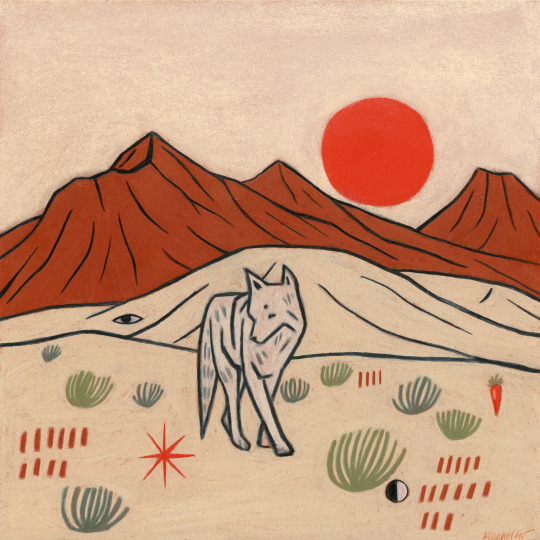
drier seasons
pastel and color pencil on paper, 8x8"
65 notes
·
View notes
Text

The Come Again Ranch (Wake Up)
345 notes
·
View notes
Text
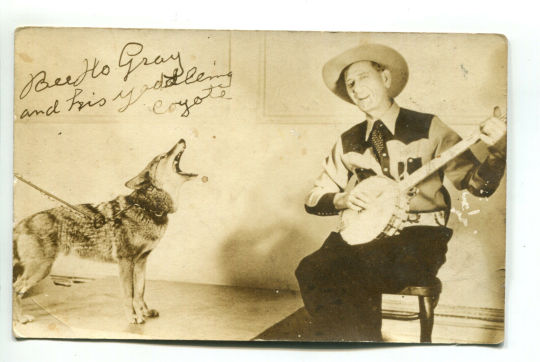
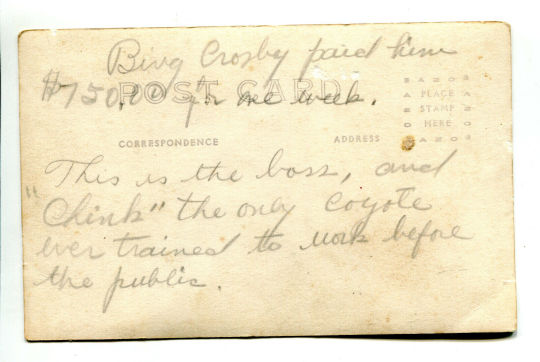
Bee Ho Gray and his Yodeling Coyote
The postcard reads:
"Bing Crosby paid him $750.00 for one week.
This is the boss, and "Chink" the only coyote ever trained to work before the public."
c. 1936
#bee ho gray#yodeling coyote#chink#coyote#animals#canine#vintage#country music#western music#country and western#postcard#1936#1930s#bing crosby#cowboy
116 notes
·
View notes
Text

⛪🔥 the apostle
#judas#my art#purgatoria#art#queer artist#original character#southern gothic#dark western#artists on tumblr#stained glass#stained glass art#oc art#ocs#comic art#character design#trans#queer#gay#sketch#illustration#procreate#coyote#canid#animal symbolism#catholic aesthetic
24 notes
·
View notes
Text
All That Glitters Masterlist




Pairing: Javy "Coyote: Machado x Reader
Summary: Growing up in the untamed wilds of the west afforded you many opportunities that most women weren't allowed, namely that of choice and self sufficiency. One day, your father announces his intention to marry you off, and you take your chance to escape, moving south to try your luck at striking gold. You arrive in the town of Maverick, setting up shop, but soon learn that life on your own is tougher than you previously thought. You catch the eye of a handsome man, but you're determined to rely on your own skills. Only, you may end up needing his help after all...
Series CW: Swearing, violence, period related violence and swearing, slow burn, fluff, (eventual) smut, enemies to lovers in a way, suggestive language, references to prostitution, firearms, etc. Chapter specific warnings will be included.
All posts related to this series will be tagged as "ATG" and "All that Glitters"
*Denotes smut
Masterlist || DPU Masterlist

Series;
Prologue
Chapter One (Coming Soon)

#javy machado#javy coyote machado#javy machado x reader#javy machado fic#javy machado imagine#javy machado x you#javy coyote machado x reader#javy coyote machado x you#top gun coyote#coyote x reader#coyote x you#coyote fanfiction#javy coyote machado imagine#javy machado fanfiction#javy machado smut#javy coyote machado smut#western au#cowboy au#wild west#fluff#angst#smut#top gun maverick#masterlist#atg#all that glitters
41 notes
·
View notes
Text
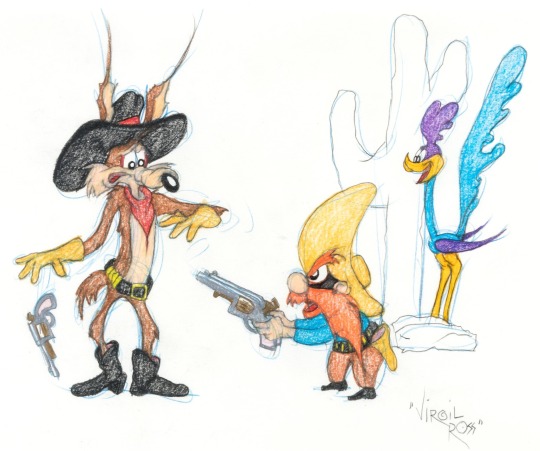
Sam Has The Drop (1990s)
#90s#warner bros#animator#virgil ross#illustration#western#wile e. coyote#yosemite sam#road runner#cowboys#looney tunes#wile e coyote
24 notes
·
View notes
Text
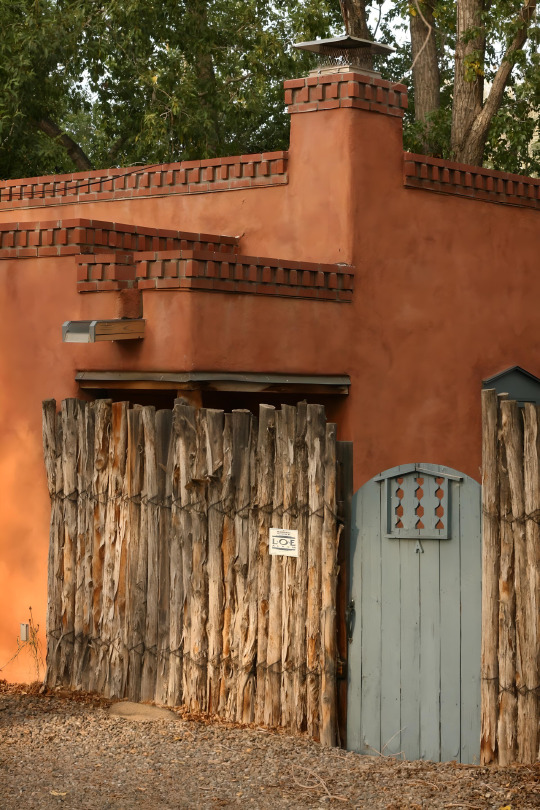
#beyond the adobe#western living#western style#southwestern#santa fe#cowboy life#ranch life#Santa Fe adobe#coyote fence
9 notes
·
View notes
Photo
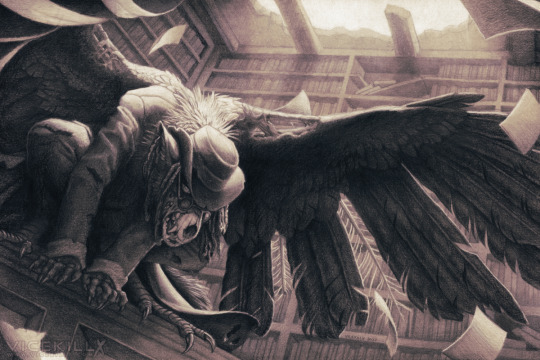

Dust to Dust
Finally clearing this piece off my queue after waaaaay too long lol. A more finished take on this piece for doniago
The fixative almost ate this one but i managed to save it, and prove to myself that I am not cut out to be an art restorer LOL
Character (c) doniago
Art (c) VicekillX
12x18 graphite and white charcoal on toned paper
Posted using PostyBirb
#vice draws#commissions#fantasy#furry#siphedious#doniago#old west#undead#western#zombie#coyote#raven#crow#feather#bird#wings#library#decay#graphite#pencil#traditional
111 notes
·
View notes
Text
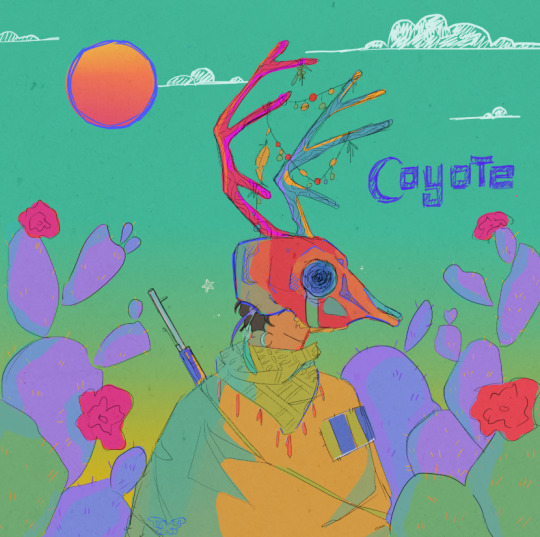
I'm very proud of this new oc i made a bit ago so I thought i'd share him :D
#art#digital art#oc art#his name's coyote and hes very sweet (but can kill you:))#western#cowboy#bounty hunter
7 notes
·
View notes
Text

Who do we think was doing it in the bubble? I think Matthew Tkachuk had some part in it.
#hockey#I think this was from the western bubble#vegas golden knights#chicago blackhawks#colorado avalanche#arizona coyotes#dallas stars#calgary flames#st louis blues#vancouver canucks#matthew tkachuk
12 notes
·
View notes
Text
Attitudes Towards Coyotes
Coywolves can live successfully in a variety of habitats (for related information, see my post on range/diet). The primary sources of mortality in the majority of these environments are anthropogenic (i.e., trapping, shooting, car accidents, and poisoning). Poisoning remained a widespread method of predator eradication until 1972, when its use on federal lands was banned in the United States; the use of household rodenticides is, however, still allowed.
Though a portion of the general public has become sympathetic towards these animals in recent years [1-2], deliberate killings still occur on city margins. An example of this was discovered during a 2005 study of a pack of coyotes in eastern Massachusetts [3]. Activity and movement patterns in this study were typical; the coyotes did not kill local pets or physically endanger citizens, but rather increased their nocturnal behavior to avoid people and displayed territorial behavior towards transient individuals. Even so, sightings of the individuals in this pack—Maeve, Jet, and Cour—led to some upset.
All three individuals were found dead during the study; in each case, the cause of death was ruled an anticoagulant pesticide (Brodifacoum, a second-generation poison and active ingredient in some forms of rat poison). Because all three displayed no abnormal behavior in the week leading up to their deaths and all died in less than a week, it is likely that, rather than having eaten poisoned prey, they were purposefully dosed at high concentrations.
Public support for the lethal management of carnivores has noticeably declined over time. Jackman and Way surveyed Cape Cod voters to examine “knowledge of and attitudes toward current coyote hunting policies and practices in Massachusetts” [1, p. 188]. Knowledge was largely limited, with only 40% being aware that Massachusetts has a hunting season for coyotes and 14% being aware that there are no bag limits—meaning a hunter can kill as many coyotes as they want. Responses to the survey indicated that only 23% supported the no-bag limits; the “only group to include majority support (62%)” [1, p. 190] comprised frequent hunters, who represented only a small percentage of the sampled public.
Anyone wishing to determine shifts in attitude towards and/or awareness of coywolves should consider the use of surveys à la Jackman and Way [1]. I wanted to incorporate a survey to determine whether residents of Massachusetts and Pennsylvania (where I am currently based) had noticeably different stances, but I did not give myself enough time to get IRB approval and properly analyze data. I would also recommend a potential partnership with an ecologist and/or biologist. Because I am an anthropologist and have little background in those fields, I was therefore somewhat limited in my view/understanding.
References:
[1] Jackman, J.L. & Way, J.G. (2017). Once I found out: Awareness of and attitudes toward coyote hunting policies in Massachusetts. Human Dimensions of Wildlife, 23(2), 187-195. https://doi.org/10.1080/10871209.2017.1397824
[2] Way, J.G. (2021). Coywolf: Eastern coyote genetics, ecology, management, and politics. Eastern Coyote/Coywolf Research, Barnstable, Massachusetts. www.easterncoyoteresearch.com/Coywolf/
[3] Way, J.G., Cifuni, S.M., Eatough, D.L., & Strauss, E.G. (2006). Rat poison kills a pack of eastern coyotes, Canis latrans, in an urban area. Canadian Field Naturalist, 120(4), 478-480.
TL;DR:
Coywolf mortality is largely anthropogenic
Attitudes towards coywolves have improved over time
Massachusetts and Pennsylvania have no bag limits on coyotes; Pennsylvania has no set hunting season
Hybridization | DNA Analyses | Range & Diet | Behavior & Ecology | Conservation | The Anthropocene
#coywolf#northeastern coyote#eastern coyote#canis latrans var.#canis latrans x canis lycaon#western coyote#canis latrans#eastern wolf#canis lycaon#alternative senior thesis project#anthropogenic mortality#predator control#carnivore management#activity patterns#movement patterns#hunting practices (MA/PA)#ecology#anthropology
2 notes
·
View notes
Text

The sun still rises
1K notes
·
View notes
Text
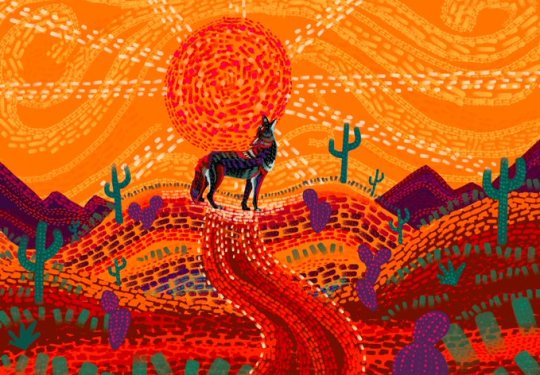
Awoooooooooo
147 notes
·
View notes